Piping solid fuel and gas boiler
The creation of a heating system involves the connection of a boiler and heating devices (radiators, convectors and a warm water floor). Also, the system must have security devices. The procedure for connecting this entire economy is called "boiler piping".
The content of the article
What is a strapping and what is it made of
The heating system has two main parts - the boiler and heating radiators or underfloor heating. What connects them and ensures safety is the harness. Depending on the type of boiler installed, different elements are used, therefore, they usually consider separately the piping of solid fuel units without automation and automated (more often gas) boilers. They have different algorithms of operation, the main ones are the possibility of heating the boiler TT in the active combustion phase to high temperatures and the presence / absence of automation. This imposes a number of restrictions and additional requirements that have to be met when piping a solid fuel boiler.
What should be in the harness
To ensure the safe operation of heating, the boiler piping must contain a number of devices. Must be:
- Pressure gauge. To control the pressure in the system.
- Automatic air vent. To release air that has entered the system so that no plugs form and the movement of the coolant is not blocked.
- Emergency valve. To relieve excessive pressure (connected to the sewage system as a certain amount of coolant is vented).
- Expansion tank. Needed to compensate for thermal expansion. In open systems, the tank is placed at the top of the system and is a regular container. In closed heating systems (always with a circulation pump), a membrane tank is installed. The place of installation is in the return pipe before entering the boiler. It can be inside a wall-mounted gas boiler or installed separately. When using the boiler for the preparation of hot water, an expansion vessel is also required in this circuit.
- Circulation pump. Mandatory for installation in systems with forced circulation. To increase the efficiency of heating, it can also be installed in systems with natural circulation (gravity). Placed on the supply or return in front of the boiler before the first branch.
Some of these devices are already installed under the casing of the wall-mounted gas boiler. The piping of such a unit is very simple. In order not to complicate the system with a large number of taps, the pressure gauge, the air vent and the emergency valve are collected in one group. There is a special case with three branches. The corresponding devices are screwed onto it.
Install a safety group on the supply pipeline immediately at the boiler outlet. They are set so that it is easy to control the pressure and you can manually release the pressure if necessary.
What pipes to do
Today, metal pipes are rarely used in the heating system. They are increasingly being replaced by polypropylene or metal-plastic. The piping of a gas boiler or any other automated (pellet, liquid fuel, electric) is possible immediately with these types of pipes.
When connecting a solid fuel boiler, at least a meter of the supply pipe must be made with a metal pipe and, best of all, with a copper one. Then you can put the transition to metal-plastic or polypropylene. But this is not a guarantee that polypropylene will not collapse. It is best to provide additional protection against overheating (boiling) of the boiler TT.
Which polymer pipes are better? Polypropylene or reinforced plastic? There is no definite answer. The polypropylene strapping is good for the reliability of the connections - properly welded pipes are a monolith. (How to connect polypropylene pipes read here). But the maximum allowable temperature of the coolant in the system is not higher than 80-90 ° C (depending on the type of pipe). And then, prolonged exposure to high temperatures leads to the rapid destruction of polypropylene - it becomes brittle. Therefore, the boiler piping with polypropylene is done only in low-temperature systems based on automated boilers.
Reinforced plastic has a higher operating temperature - up to 95 ° C, which is sufficient for most systems. They can also be used to strap a solid fuel boiler, but only if there is one of the systems for protecting against overheating of the coolant (described below). But reinforced-plastic pipes have two significant drawbacks: a narrowing at the junction (fittings design) and the need to regularly check the joints, as they flow over time. So the piping of the boiler with metal-plastic is done provided that water is used as a heat carrier. Non-freezing liquids are more fluid, therefore, in such systems, it is better not to use compression fittings - they will still flow. Even if you replace the gaskets with chemical resistant ones.
Gas boiler piping
Modern gas boilers have good automation, which controls all the parameters of the equipment: gas pressure, the presence of a flame on the burner, the pressure level and temperature of the coolant in the heating system. There is even an automatics that can adjust the work to weather data. In addition, wall-mounted gas boilers in most cases contain such necessary devices as:
- safety group (pressure gauge, air bleed valve, emergency valve);
- expansion tank;
- circulation pump.
The parameters of all these devices are indicated in the technical data of gas fired cats. When choosing a model, you need to pay attention to them and choose a model not only in terms of power, but also in terms of the volume of the expansion tank and the maximum volume of the coolant.
Wiring diagram for a wall-mounted gas boiler
In the simplest case, the boiler piping contains only shut-off valves at the boiler inlet so that repair work can be carried out if necessary. A mud filter is also installed on the return pipe from the heating system to remove possible contamination. That's the whole harness.
In the photo above there are corner ball valves, but this, as you understand, is not necessary - it is quite possible to put ordinary models, and turn the pipes closer to the wall using corners. Also note that there are taps on both sides of the sump - this is so that it can be removed and cleaned without draining the system.
In the case of connecting a single-circuit wall-mounted gas boiler, it is still easier - only gas is supplied (connected by gas workers), hot water is supplied to radiators or a water-heated floor and the return from them.
Wiring diagrams for floor-standing gas boilers
Floor-standing models of gas heating boilers are also equipped with automation, but they have neither a safety group, nor an expansion tank, nor a circulation pump. All these devices have to be installed additionally. The strapping scheme looks a little more complicated because of this.
An additional jumper is installed on two diagrams of the classic boiler piping. This is the so-called "anti-condensation" loop. It is needed in large systems, if the temperature of the water in the return pipe is too low, it can cause condensation. To eliminate this phenomenon and arrange this jumper. With its help, hot water from the supply is added to the return pipe, raising the temperature above the dew point (usually 40 ° C). There are two main ways to do this:
- with the installation of a circulation pump with an external temperature sensor in the lintel (and the photo is at the top right);
- using a three-way valve (pictured below left).
In a circuit with a circulator on the jumper (condensation pump), it is made with a pipe one step smaller in diameter than the mains. The sensor is attached to the return pipe. When the temperature drops below the set one, the pump power circuit is turned on, hot water is added. When the temperature rises above the threshold, the pump turns off. The second pump is the heating system itself, it works all the time while the boiler is running.
In the second scheme with a three-way valve, it opens the hot water mixture when the temperature drops (set on the valve). In this case, the pump is on the return pipe.
Solid fuel boiler piping
Any owner of a TT boiler knows that a lot of heat is generated during the active combustion phase. Over time, experience comes - when and how to close the damper, for what period of time, etc. But it is worth a little distraction, and the water in the system will overheat and may even boil. In order to prevent such a phenomenon, the piping of the boiler without automation must contain several devices that prevent the system from boiling. Only in this case can you make wiring around the house with polymer pipes. Otherwise, sooner or later, the overheated coolant will soften the material, the pipes will break with all the ensuing consequences. Therefore, the piping of a solid fuel boiler, in addition to traditional elements - a safety group, an expansion tank and a circulation pump - contains a solid number of additional devices and usually requires quite solid funds.
The cyclical nature of the operation of solid fuel boilers leads not only to boiling of the system, but also to the fact that it is very hot in the house (when the fuel is actively burning), then cold - when everything is burned out. There is a solution to eliminate these phenomena: install an indirect heating boiler or a heat accumulator. Both are containers with water, they just perform different functions and, accordingly, are connected in different ways.
Piping with an indirect heating boiler
Indirect heating boiler heats water for hot water supply and is connected on one side to the heating system, and on the other - to the hot water dispensing comb. Thus, temperature drops are softened, and water is heated for technical needs. Not a bad solution.
How does this scheme work? If the water temperature in the water heater is lower than the set one, then the boiler is connected to water heating in the tank. The heating system is turned off for this time and cools down a little. After heating the water to the required temperature, the boiler switches back to work with the heating circuit. When the warm water is consumed, the temperature in the tank drops again, and the heating connection is made again.
It is not difficult, but with such a scheme, overheating is still possible - the consumption of hot water does not always coincide with the phase of active combustion of the fuel. In this case, overheating is possible.
Heat storage circuit
The second way is to install a heat accumulator. This is also a container with water, but it is connected only to the heating system. Serves to soften temperature differences in the system.
This method is more reliable, but requires several separate circuits. The boiler heats water in a heat accumulator - it is connected to the TA inputs. This is one closed loop. The second circuit goes for heating - from the outlet of the heat accumulator (in the upper part of the tank) hot water enters the heating system, and the cooled water from the return pipe enters the lower part of the same tank. If necessary, you can also connect underfloor heating system.
With this arrangement, there is no sharp increase in temperature, which is usual for a solid fuel boiler, during active combustion. This is because the volume of the tank is added, so there is practically no overheating of water. Then, when the fuel has burnt out and in a conventional system the house begins to cool down, the heat stored in the heating phase continues to be consumed in the system with TA. In this way, the temperature background is leveled and the time between furnaces increases.
Such piping of a solid fuel boiler is more reliable and the wiring from the TA can be made with polypropylene pipes, but the circuit from the boiler to the tank must be made with metal pipes. In this case, you can use steel, but copper is better.
Boiler TT piping with overheating valve
The third way to make a solid fuel boiler overheating protection is to install an automatic overheating protection device. This is a special valve with a temperature sensor. The principle of operation is simple: when a certain temperature is exceeded (usually 95-97 ° C), the valve opens the inlet of cold water from the water supply system, and the excess overheated water will be released into the sewer. This is how, for example, REGULUS DBV 1-02, Regulus BVTS 14480 works.
The valves, although manufactured by the same company, have a different structure and installation scheme. So REGULUS DBV is installed at the boiler outlet, has a built-in temperature sensor (installation diagram - above). The overheating protection valve TT of the Regulus BVTS 14480 boiler has a remote sensor, it can be mounted both at the inlet and at the outlet (installation diagram below). Why is this option good? The fact that he can work in systems with natural circulation - he does not need pressure to work.
Their approximate cost - 40-60 € - is much less than the cost of installing a heat accumulator or an indirect heating boiler, but this method does not solve the problem of temperature fluctuations. These valves, by the way, can be used to increase the reliability of the circuit with the installed indirect circuit and thus precisely eliminate the possibility of boiling the system.
What else is needed in the system
The boiler piping will be incomplete if it does not have a valve for draining and filling the system. And it's better if they are separate. The specific installation location depends on the structure of the system, but there are certain rules:
- The drain tap is made at the lowest point. This is very important if the heating system needs to be preserved for the winter - it is necessary that as little coolant as possible remains in it. If the system will work constantly in winter, usually a tap is attached to one of the radiators (with or without a branch pipe). This will be the place where the system is drained.
- If water is used in the heating system, the inlet from the water supply is usually connected. In the case of a wall-mounted gas boiler, there is a special branch pipe with a stationary tap for this. Cold water is connected to this inlet, if necessary, the tap is opened for a short time. If a boiler is used without a special branch pipe, a valve is also installed in the supply pipeline (preferably higher).As an option - on the section of the pipe that goes to the expansion tank.
In some systems, the drain and fill of the system is made from one tap. This is possible if there is a pump that is pumped coolant and there is a pressure gauge by which the generated pressure can be monitored. If there is a separate tap for filling the system at a high point, it can also be filled by gravity.

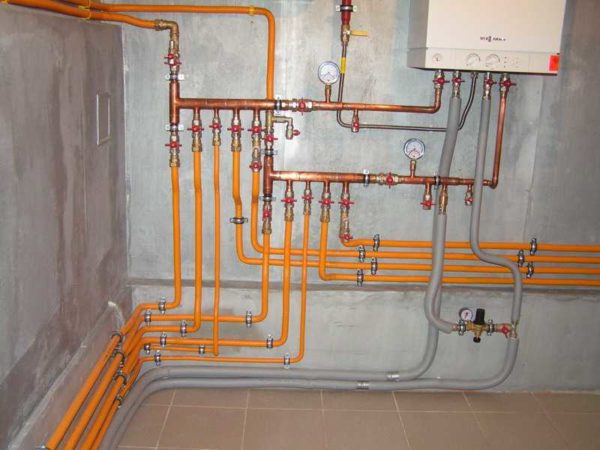
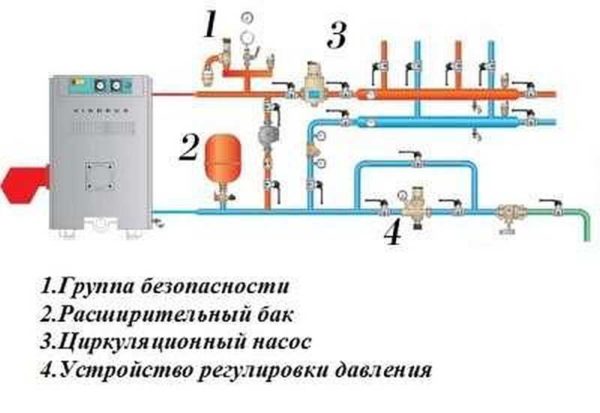
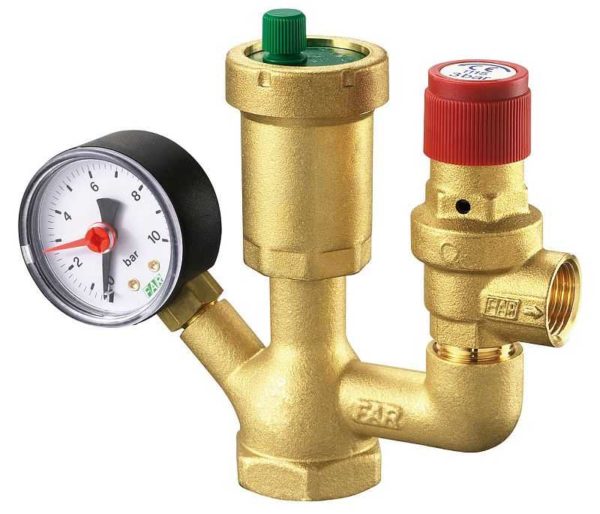
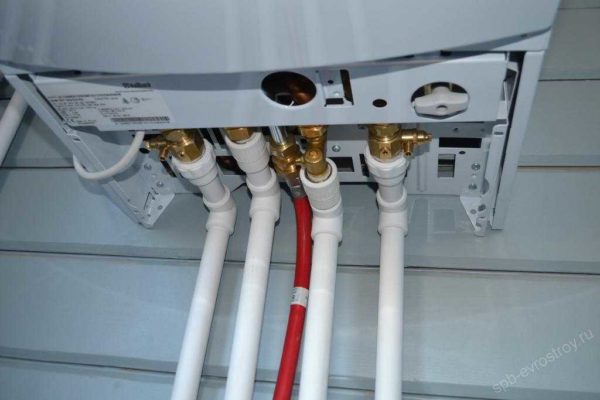
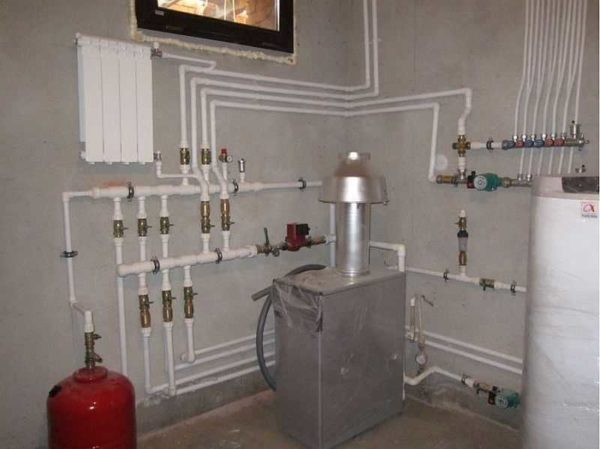
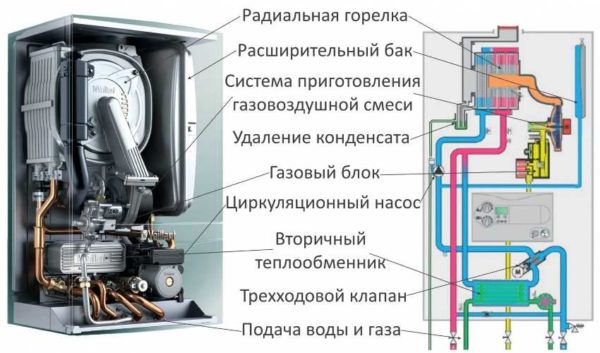
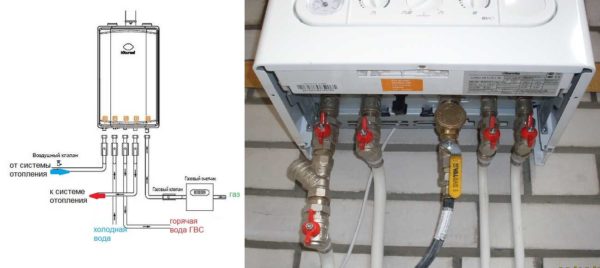
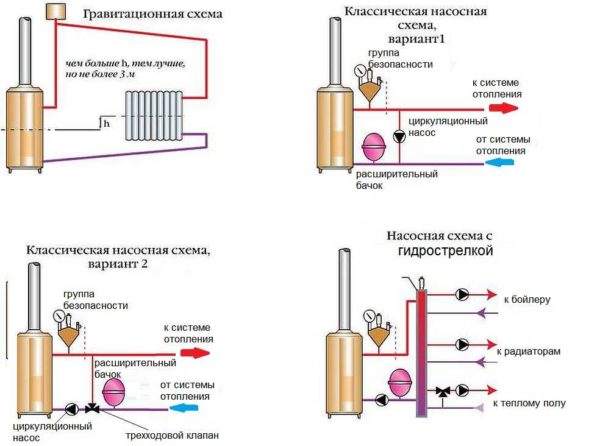
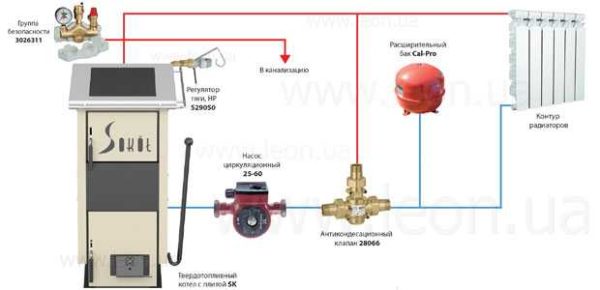
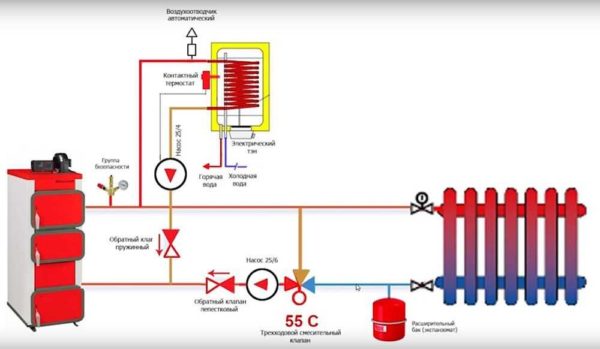

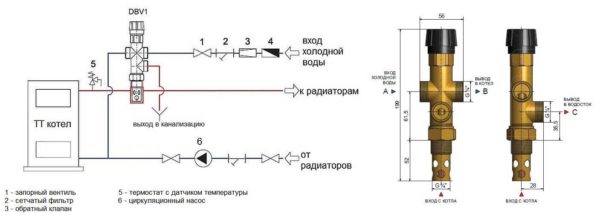
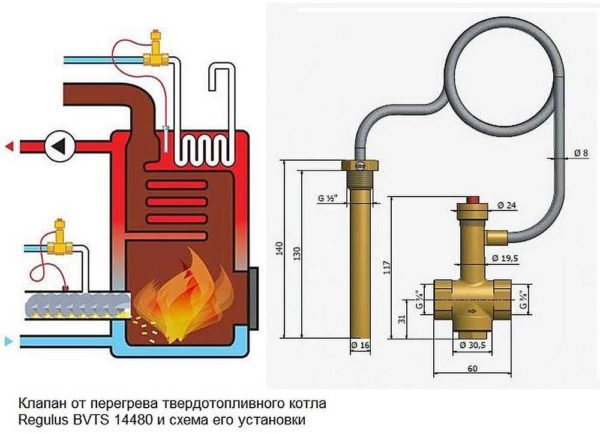
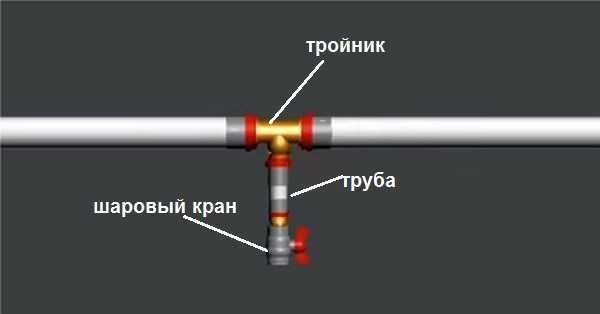

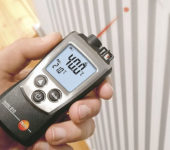
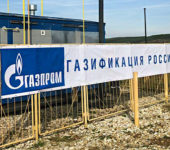
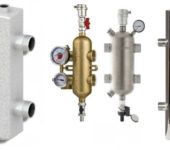

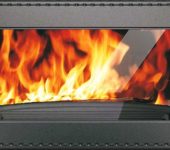





It turns out that gas is so expensive, I got upset ... It will not be possible to carry it out exactly, we must look for other alternatives. What can you advise?